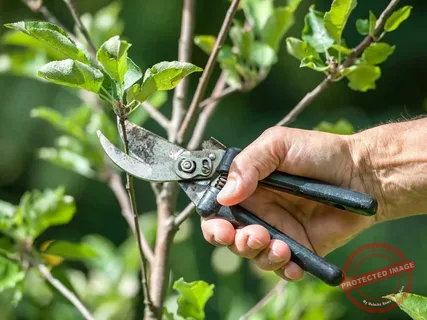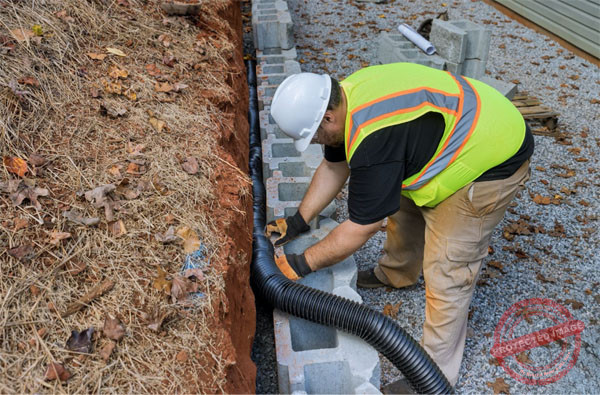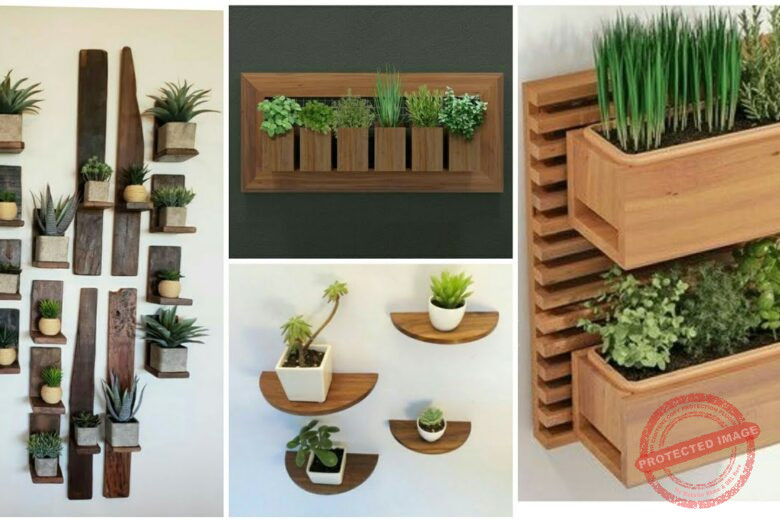Starting your own herb garden is one of the most rewarding gardening experiences, whether you’re a beginner or a seasoned gardener. Fresh herbs add incredible flavor to home-cooked meals, can be used for medicinal purposes, and are easy to grow in a variety of settings. You don’t need a large garden or yard to get started – herbs can be grown in containers, on windowsills, or in small outdoor spaces. With a little planning and care, you can create a thriving herb garden that will provide you with fresh ingredients throughout the growing season and beyond.
One of the many advantages of growing herbs is that they are relatively low-maintenance compared to other plants. Most herbs are hardy and can thrive in different types of environments, making them ideal for gardeners of all skill levels. Whether you choose to plant culinary herbs like basil and parsley, or medicinal varieties like chamomile and echinacea, the benefits of having fresh herbs at your fingertips are endless. Additionally, herbs are versatile plants that can enhance your garden aesthetically by attracting beneficial insects, while also providing practical use in your kitchen.
This guide will walk you through everything you need to know to successfully start your own herb garden. From selecting the right herbs for your space to preparing the soil, choosing containers, and understanding the growing conditions for each plant, you’ll be equipped with all the knowledge you need to get started. Whether you have a small urban balcony or a spacious backyard, growing herbs can be a fulfilling hobby that delivers both beauty and utility to your gardening experience.
Selecting the Right Herbs for Your Garden
The first step in starting your herb garden is selecting the herbs you want to grow. This decision depends largely on your personal preferences, climate, and the amount of space you have available. It’s essential to choose herbs that will thrive in your specific growing conditions, whether you’re planting in a garden bed, raised container, or indoors.
1. Culinary Herbs
Culinary herbs are some of the most popular choices for herb gardens because they add fresh, vibrant flavors to your meals. Common options include basil, thyme, oregano, parsley, rosemary, and cilantro. These herbs are relatively easy to grow and can thrive in most home gardens, provided they get enough sunlight. Basil, for example, is a fast-growing herb that loves warm weather and is perfect for adding to salads, pasta, and sauces. On the other hand, rosemary and thyme are perennial herbs that will come back year after year if cared for properly.
2. Medicinal Herbs
If you’re interested in growing herbs for their medicinal properties, there are many options to choose from. Chamomile, for example, is known for its calming effects and is often used to make tea. Echinacea is another great herb that can boost the immune system and is frequently used in herbal remedies. Lavender is not only fragrant but can be used in lotions, oils, and other natural products for its relaxing qualities. Medicinal herbs can be a wonderful addition to your garden, offering a variety of health benefits while also adding color and beauty to your space.
3. Herbs for Companion Planting
Companion planting involves growing certain plants together to enhance their growth and protect against pests. Many herbs are excellent companion plants and can improve the health of your entire garden. For example, planting basil near tomatoes can enhance their flavor and help repel pests like aphids. Mint and dill can attract beneficial insects that prey on garden pests, making them useful companions for vegetables like carrots and cucumbers. If you want your herb garden to serve multiple purposes, consider adding a few herbs that double as companion plants.
4. Perennial vs. Annual Herbs
When planning your herb garden, it’s also important to know whether the herbs you’re planting are annuals or perennials. Annual herbs like basil, cilantro, and dill need to be replanted each year, as they complete their life cycle in a single growing season. Perennials such as rosemary, thyme, and sage, on the other hand, will come back year after year if they are properly maintained. Incorporating a mix of both types of herbs can provide you with a continual supply of fresh flavors throughout the growing season and beyond.
Choosing the Right Location for Your Herb Garden
Once you’ve selected your herbs, the next step is finding the perfect location for your herb garden. Whether you’re growing indoors or outdoors, herbs need a spot where they can thrive. The location you choose will have a direct impact on how well your herbs grow, so it’s essential to provide them with the right conditions.
1. Sunlight Requirements
Most herbs require at least six hours of sunlight per day to grow well. If you’re planting outside, choose a location that gets full sun for most of the day. A south-facing area is often ideal because it receives the most sunlight. For those growing herbs indoors, placing them on a sunny windowsill or near a bright light source is key. If your home doesn’t get enough natural light, you can use grow lights to supplement. Keep in mind that some herbs, like parsley and mint, can tolerate partial shade, so if you don’t have a super sunny spot, you can still grow these varieties.
2. Soil Preparation
Herbs prefer well-drained soil that is rich in organic matter. Before planting, make sure to prepare your soil by adding compost or other organic material to improve its texture and fertility. If you’re growing herbs in containers, use a high-quality potting mix that is specifically designed for herbs or vegetables. Avoid using heavy garden soil in pots, as it can become compacted and hinder root growth. Good drainage is critical because herbs don’t like to sit in waterlogged soil, which can lead to root rot.
3. Container Gardening
If you have limited outdoor space or prefer the flexibility of moving your plants around, container gardening is a great option for herbs. Most herbs do very well in pots, and it’s easy to move them around to ensure they’re getting the right amount of sunlight. When choosing containers, make sure they have drainage holes to prevent water from accumulating at the bottom. Terra cotta pots are a popular choice because they allow the soil to dry out between waterings, which is beneficial for most herbs.
Container gardening also allows you to grow herbs indoors, where you can keep them close to your kitchen for easy access while cooking. Small pots can be placed on windowsills, countertops, or hanging shelves, giving you a fresh supply of herbs year-round.
4. Watering and Maintenance
Herbs generally don’t require a lot of water, but it’s important to keep the soil consistently moist, especially during hot, dry weather. Most herbs prefer their soil to dry out slightly between waterings, so be careful not to overwater. One tip is to water deeply but less frequently, allowing the roots to grow strong and reach deep into the soil. Herbs like rosemary, thyme, and oregano are particularly drought-tolerant once established, while others like basil and cilantro prefer more consistent moisture.
Regular pruning and harvesting will also help your herbs thrive. Pruning encourages bushier growth, which means more leaves for you to harvest. Harvesting regularly also prevents your herbs from flowering too early, which can cause the flavor of some herbs to change.
Growing Herbs Indoors vs. Outdoors
Deciding whether to grow your herbs indoors or outdoors depends on your available space, climate, and preferences. Each option has its pros and cons, so it’s worth considering both before deciding where to plant your herb garden.
1. Growing Herbs Outdoors
Growing herbs outdoors is ideal if you have a yard or garden space that receives plenty of sunlight. Outdoor herb gardens can range from small raised beds to larger garden plots, depending on how much space you have. When growing herbs outdoors, you’ll typically see faster growth due to the natural sunlight and access to fresh air. Additionally, herbs grown outdoors can attract beneficial insects like bees and butterflies, which help with pollination.
One potential downside to outdoor gardening is the need to protect your herbs from pests, such as aphids, slugs, and rabbits. You may also need to take extra care in regions with extreme weather conditions. In colder climates, perennial herbs like rosemary and thyme may need protection from frost during the winter months, while herbs like basil may struggle in very hot, dry environments without extra watering and care.
2. Growing Herbs Indoors
If you don’t have outdoor space, or if you want easy access to fresh herbs year-round, growing them indoors is a great alternative. Indoor herb gardens are perfect for small spaces like apartments, and they allow you to control the growing environment more closely. You can grow herbs in containers, on windowsills, or even using vertical gardening systems to maximize space.
The main challenge of growing herbs indoors is providing enough light. As mentioned earlier, most herbs need at least six hours of sunlight per day, so placing them near a sunny window is crucial. If your indoor space doesn’t get enough natural light, you may need to invest in grow lights to supplement. You’ll also need to be mindful of watering, as indoor plants can be more susceptible to overwatering due to the lack of airflow.
3. Extending the Growing Season
One of the benefits of growing herbs indoors is that you can extend the growing season. While outdoor herb gardens are typically seasonal, indoor herb gardens can thrive year-round if they are provided with the right conditions. This means you can enjoy fresh herbs for cooking even during the winter months when outdoor plants are dormant.
For outdoor gardeners, another way to extend the growing season is by using cold frames, cloches, or greenhouses to protect your herbs from frost and cold weather. These tools can help maintain a warmer environment for your herbs, allowing them to continue growing longer into the fall and even winter, depending on your climate.
Common Mistakes to Avoid When Starting an Herb Garden
While herbs are generally easy to grow, there are a few common mistakes that beginners should watch out for when starting an herb garden.
1. Overwatering
One of the most common mistakes gardeners make is overwatering their herbs. Herbs like rosemary, thyme, and oregano prefer dry conditions and can easily suffer from root rot if watered too frequently. Always check the soil before watering, and allow the top inch or so to dry out between waterings. For container-grown herbs, make sure your pots have good drainage to prevent water from pooling at the bottom.
2. Planting Herbs Too Close Together
When planting your herbs, be sure to give them enough space to grow. Herbs that are planted too closely together can become overcrowded, leading to poor air circulation and an increased risk of diseases. Additionally, some herbs, like mint, can spread quickly and take over your garden if not contained. To avoid overcrowding, follow the recommended spacing guidelines for each herb and consider planting invasive herbs like mint in separate containers.
3. Neglecting Sunlight Needs
Herbs need plenty of sunlight to grow well, and failing to provide enough light is a common mistake. If you’re growing herbs indoors, make sure they are placed near a sunny window or use grow lights to supplement. If your herbs don’t get enough sunlight, they can become leggy and weak, which can affect their flavor and overall health.
4. Not Harvesting Regularly
Regular harvesting is important for keeping your herbs healthy and productive. If you don’t harvest your herbs often enough, they may flower and go to seed, which can change the flavor and reduce the plant’s overall productivity. To keep your herbs growing strong, be sure to prune and harvest them regularly.
Conclusion
Starting your own herb garden is a simple yet rewarding process that brings countless benefits to your home and kitchen. By selecting the right herbs, choosing the perfect location, and providing proper care, you can enjoy fresh, flavorful herbs throughout the growing season and beyond. Whether you’re growing herbs outdoors in a garden bed or indoors in containers, the process of tending to your herb garden will enhance your gardening skills while giving you access to fresh ingredients for cooking, health remedies, and even companion planting. Avoiding common mistakes, such as overwatering or neglecting light needs, will ensure your herb garden flourishes. With a bit of planning and care, you’ll soon be enjoying the many joys that come with growing your own herbs!



